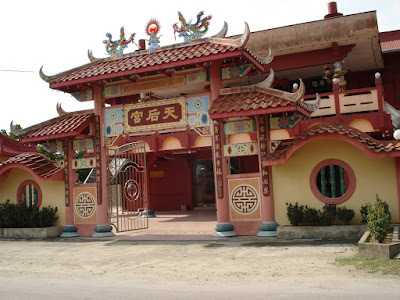Tua Pek Kong Temple, Kuching

Tua Pek Kong Temple is one of the oldest (or the earliest known) Chinese temple in Sarawak; it is also one of the most famous and mentioned tourist destination in Sarawak. The temple was believed to be built around the year 1800, more than two centuries; the earliest known official land title issued by Charles Brooke was 29 August 1871. Like many of the earlier Chinese temple in Sarawak, it was a small & simple hut; the first known renovation was done in the year 1856, and subsequently it was upgraded with ceramic roofing & partial brick walls in 1863. By the year 1880 when cement was introduced into Sarawak, major parts of the temple were then concreted as to existing look. The earlier management of the temple before the Japanese occupation was elected informally by yearly cast lots of getting one representative with two ‘taukey’ to assist the required periodic ceremonial & religious occasions. After the war, the temple was managed by five Chinese ...


